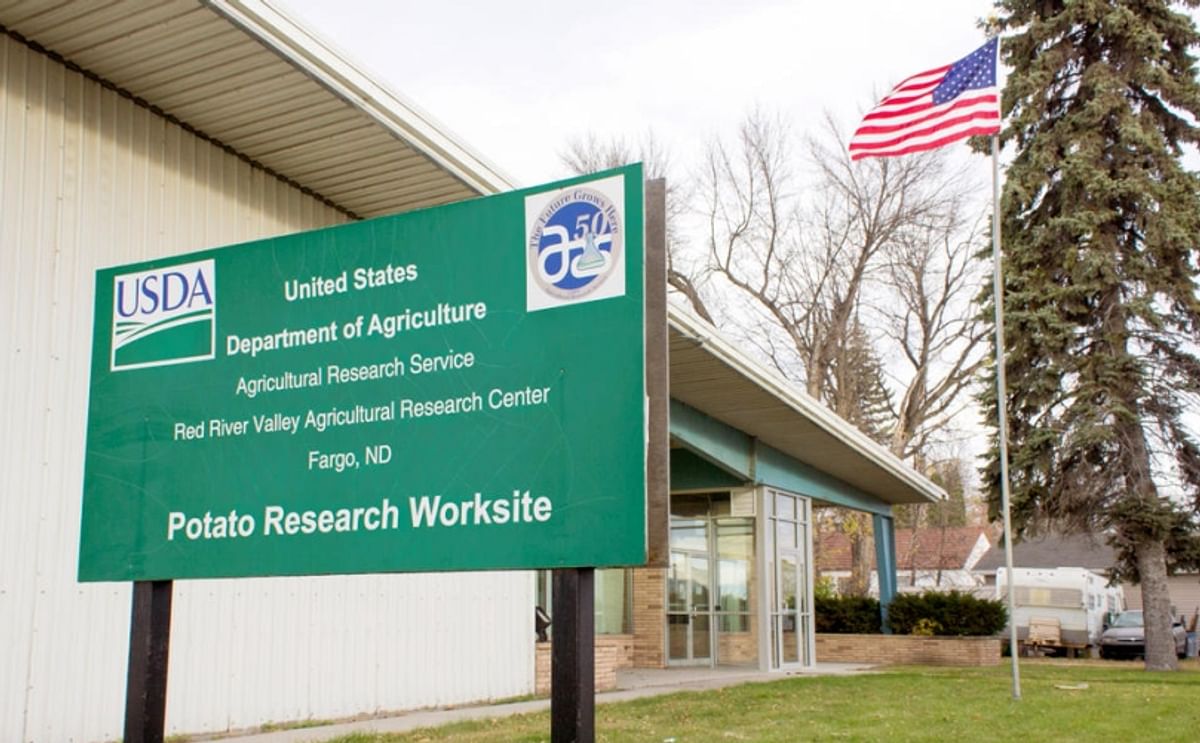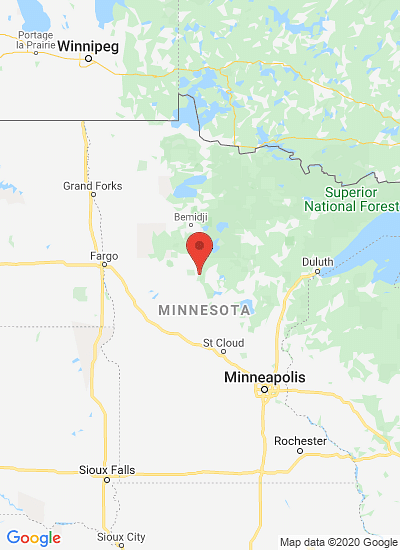The U.S. Department of Agriculture’s Agricultural Research Service Potato Research Worksite sign greets visitors to the center where cutting-edge potato research is conducted in East Grand Forks, Minn. (Nick Nelson / Agweek)
Unique Potato Research Worksite in Minnesota

Unless you’re part of the U.S. potato industry, you’ve probably never heard of the U.S. Department of Agriculture research facility in East Grand Forks, Minn.
But to people who work in the industry, the USDA Agricultural Research Service’s Potato Research Worksite is a unique, invaluable resource that helps develop better chips, fries and dehydrated flakes through improved storage and processing.
Just one example of what the worksite does: “When you open a bag of potato chips and see a brown or discolored chip — we’re working to keep that from happening,” says Darrin Haagenson, the site’s coordinator and food technologist.
In itself, there’s nothing particularly unusual about that. Public and private researchers nationwide are working to improve potatoes. But the East Grand Forks site is unique because it allows the many-faceted potato industry — which includes growers, processors, breeders and other researchers — to “work collaboratively and more efficiently. Everybody learns faster,” says David Parish, a potato industry consultant who’s familiar with the facility.
“It’s an absolutely unique facility, with incredible collaboration there,” says Bill Kemp, the Fargo, N.D.-based ARS Plains Area agricultural administrator.
The worksite is a collaboration of ARS, the University of Minnesota and North Dakota State University extension services and the East Grand Forks-based Northern Plains Potato Growers Association. East Grand Forks is in the Red River Valley of eastern North Dakota and western Minnesota, the nation’s leading producer of red potatoes and the only region that produces in volume for the chip, fresh, seed and process markets.
The ARS worksite is a “very unique facility whose research is not replicated anywhere else in the U.S. We are very fortunate to have this state-of-the-art potato research facility located here in our backyard,” says Chuck Gunnerson, association president.
The ARS owns the equipment and part of the worksite building. It leases the rest of the building from the potato growers association, which is headquartered next door.
But to people who work in the industry, the USDA Agricultural Research Service’s Potato Research Worksite is a unique, invaluable resource that helps develop better chips, fries and dehydrated flakes through improved storage and processing.
Just one example of what the worksite does: “When you open a bag of potato chips and see a brown or discolored chip — we’re working to keep that from happening,” says Darrin Haagenson, the site’s coordinator and food technologist.
In itself, there’s nothing particularly unusual about that. Public and private researchers nationwide are working to improve potatoes. But the East Grand Forks site is unique because it allows the many-faceted potato industry — which includes growers, processors, breeders and other researchers — to “work collaboratively and more efficiently. Everybody learns faster,” says David Parish, a potato industry consultant who’s familiar with the facility.
“It’s an absolutely unique facility, with incredible collaboration there,” says Bill Kemp, the Fargo, N.D.-based ARS Plains Area agricultural administrator.
The worksite is a collaboration of ARS, the University of Minnesota and North Dakota State University extension services and the East Grand Forks-based Northern Plains Potato Growers Association. East Grand Forks is in the Red River Valley of eastern North Dakota and western Minnesota, the nation’s leading producer of red potatoes and the only region that produces in volume for the chip, fresh, seed and process markets.
The ARS worksite is a “very unique facility whose research is not replicated anywhere else in the U.S. We are very fortunate to have this state-of-the-art potato research facility located here in our backyard,” says Chuck Gunnerson, association president.
The ARS owns the equipment and part of the worksite building. It leases the rest of the building from the potato growers association, which is headquartered next door.
¿Te gustaría recibir noticias como esta por correo electrónico? ¡Únete y suscríbete!
Únete a nuestra Telegrama ¡Canal para actualizaciones periódicas!
Empresa Destacada
Contenido Patrocinado
Contenido Patrocinado
Contenido Patrocinado
Contenido Patrocinado
Contenido Patrocinado













